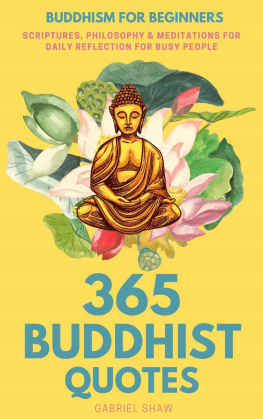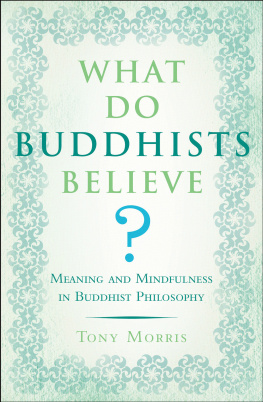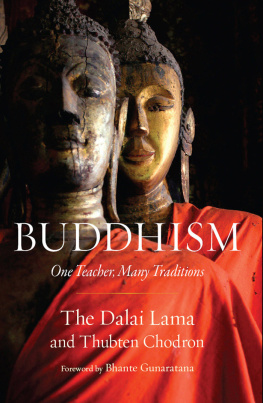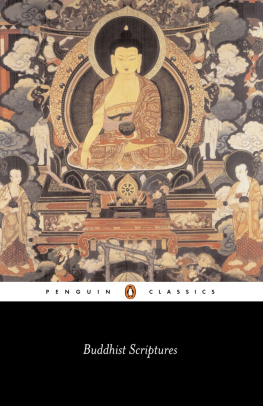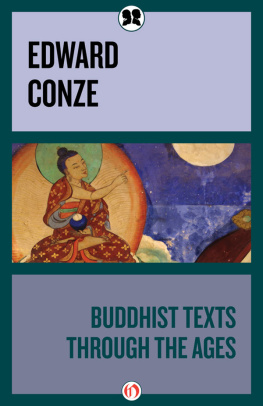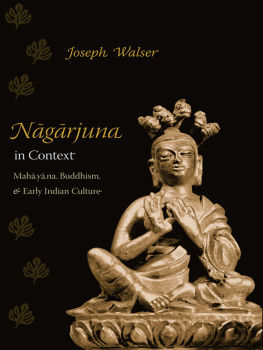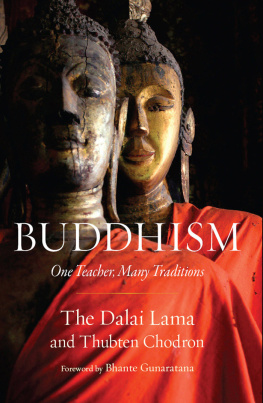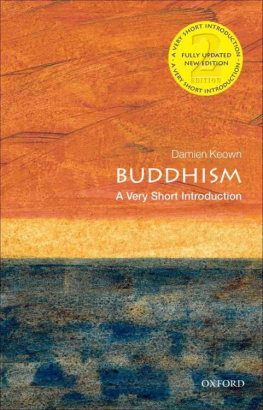DONALD S. LOPEZ, JR. was born in Washington, DC, in 1952 and was educated at the University of Virginia, receiving a doctorate in Buddhist Studies in 1982. He is currently Carl W. Belser Professor of Buddhist and Tibetan Studies in the Department of Asian Languages and Cultures at the University of Michigan. He is the author or editor of a number of books, including Elaborations on Emptiness: Uses of the Heart Stra, Buddhism in Practice, Curators of the Buddha: The Study of Buddhism Under Colonialism, Prisoners of Shangri-La: Tibetan Buddhism and the West and Buddhism: An Introduction and Guide (Penguin 2001). He has also served as editor of the Journal of the International Association of Buddhist Studies. In 2000 he was elected to the American Academy of Arts and Sciences.
Buddhist Scriptures
Edited by DONALD S. LOPEZ, JR.
PENGUIN BOOKS
PENGUIN BOOKS
Published by the Penguin Group
Penguin Books Ltd, 80 Strand, London WC2R 0RL, England
Penguin Putnam Inc., 375 Hudson Street, New York, New York 10014, USA
Penguin Books Australia Ltd, 250 Camberwell Road, Camberwell, Victoria 3124, Australia
Penguin Books Canada Ltd, 10 Alcorn Avenue, Toronto, Ontario, Canada M4V 3B2
Penguin Books India (P) Ltd, 11, Community Centre, Panchsheel Park, New Delhi 110 017, India
Penguin Books (NZ) Ltd, Cnr Rosedale and Airborne Roads, Albany, Auckland, New Zealand
Penguin Books (South Africa) (Pty) Ltd, 24 Sturdee Avenue, Rosebank 2196, South Africa
Penguin Books Ltd, Registered Offices: 80 Strand, London WC2R 0RL, England
www.penguin.com
This collection first published 2004
3
Editorial material copyright Donald S. Lopez, Jr., 2004
All rights reserved
The moral right of the author has been asserted
Except in the United States of America, this book is sold subject to the condition that it shall not, by way of trade or otherwise, be lent, re-sold, hired out, or otherwise circulated without the publishers prior consent in any form of binding or cover other than that in which it is published and without a similar condition including this condition being imposed on the subsequent purchaser
EISBN: 9781101488195
Contents
Acknowledgements
The translations in chapters is reprinted with the permission of the University of Hawaii Press. Full citations appear at the end of each chapter.
I would like to thank Andrew Quintman for all of his assistance in the formatting of the translations. Above all, I am grateful to the translators of the works that appear here, both for their generosity in offering their excellent work to this volume and for their patience in awaiting its appearance.
Technical Note
Buddhist technical terms have been translated into English by the individual translators wherever possible, with the original Sanskrit sometimes provided in parentheses. The titles of texts have also been translated wherever possible, with the original language title following in parentheses. Material appearing in square brackets has been added by the translator in an effort to make the translation read more smoothly. Because of the range of meaning of much Buddhist terminology, and the multiple connotations of these terms across Buddhist cultures, the translation of this terminology has been left to the discretion of the individual translators and has not been standardized throughout the volume. The spelling, however, has been standardized, as has the use of italics for Sanskrit and other foreign words. Chinese terms appear in Pinyin. Tibetan terms are provided in Wylie transliteration. Certain common place names and selected terms that have entered into English usage appear without diacritical marks.
A glossary of common Buddhist terms may be found at the end of the volume.
Texts from the Chinese Buddhist canon are cited according to the standard numbers in the Taish printed edition (abbreviated T): Taish shinsh daizky, edited by Takakusu Junjir and Watanabe Kaikyoku. Tokyo: Daizkykai, 19241935.
Introduction Digesting the Dharma
Buddhist scriptures. It is perhaps fitting to begin with a brief consideration of these two words, beginning with the second, and less difficult. Buddhism, like the other religions of ancient India, began as an oral tradition and developed without written texts for the first centuries after the death of the Buddha. The Buddha himself wrote nothing, and his words were preserved orally by his monks. These teachings were not committed to writing, and thus did not become scriptures until the first century BCE and then not in India, but in Sri Lanka, where there was fear that war might bring the demise of the monks who recited the teachings, and hence the demise of the teachings themselves. Thus, when we think of Buddhist scriptures, it is important to keep in mind that the early texts were not preserved physically, but were kept in the memories of monks.
New texts, which claimed to be the words of the Buddha himself, began to appear, in writing, about four centuries after his death. The first Buddhist works with named authors did not appear until the second century CE. Buddhist teachings would be inscribed on palm leaves, on birch bark and, later, on paper; painted on scrolls and on the walls of temples; and carved in relief and backwards on wooden blocks that would then be inked and pages printed. After convening a council of Buddhist monks to determine the final form of the canon of scriptures, in 1871, King Mindon of Burma ordered that that canon be carved on 729 marble tablets, each four feet tall and enshrined in its own small temple, at a pagoda in Mandalay.
Yet the majority of the worlds Buddhists would regard these 729 tablets as but a small fraction of the Buddhist scriptures, raising the question of what is meant by Buddhist. Most Buddhists over the course of history and across Asia, if asked, would be likely to say that a Buddhist is someone who seeks refuge from suffering in the three jewels: the Buddha, the dharma, and the sagha. But each of these terms, as the contents of this volume demonstrate, has a wide variety of meanings across the tradition. The first and last terms are perhaps the more stable. The Buddha usually refers to the historical Buddha, called Gautama or kyamuni, who lived in India around the fifth century BCE. But he himself claimed to be only the latest of many buddhas, with more to come in the future, and other scriptures would proclaim the presence of thousands of buddhas throughout the universe. The sagha, in common parlance, refers to the community of monks and nuns. It is the presence of this community where adherence to a code of conduct has been more important than assertion of a particular doctrine that has traditionally been taken as the sign of the presence of Buddhism in a particular land. The dharma, a notoriously untranslatable term, includes all of the teachings. And which teachings are authentic that is, which are the word of the Buddha himself or spoken with his sanction has been a source of controversy since the first centuries of the tradition. As Buddhism spread across India and then across Asia, more and more texts were composed that claimed to be authentic. As a result, there was no consensus across the various Buddhist traditions as to what constituted the canon, and the collections of texts became so large that they surpassed the comprehension of any single individual. Buddhism has therefore never had anything quite like the Bible or the Koran. It has had, instead, individual scriptures, and a wide variety of collections of scriptures. This volume is the latest collection of Buddhist scriptures, but certainly not the last.



